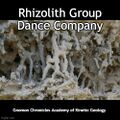Template:Selected anniversaries/February 14: Difference between revisions
No edit summary |
No edit summary |
||
| Line 38: | Line 38: | ||
||1878 – Julius Nieuwland, Belgian priest, chemist and academic (d. 1936) | ||1878 – Julius Nieuwland, Belgian priest, chemist and academic (d. 1936) | ||
||Robert Erich Remak (14 February 1888) was a German mathematician. He is chiefly remembered for his work in group theory (Remak decomposition). His other interests included algebraic number theory, mathematical economics and geometry of numbers. | |||
||1894 – Eugène Charles Catalan, Belgian-French mathematician and academic (b. 1814) Eugène Charles Catalan (30 May 1814 – 14 February 1894)[1] was a French and Belgian mathematician who worked on continued fractions, descriptive geometry, number theory and combinatorics. His notable contributions included discovering a periodic minimal surface in the space {\displaystyle \mathbb {R} ^{3}} \mathbb {R} ^{3}; stating the famous Catalan's conjecture, which was eventually proved in 2002; and, introducing the Catalan numbers to solve a combinatorial problem. | ||1894 – Eugène Charles Catalan, Belgian-French mathematician and academic (b. 1814) Eugène Charles Catalan (30 May 1814 – 14 February 1894)[1] was a French and Belgian mathematician who worked on continued fractions, descriptive geometry, number theory and combinatorics. His notable contributions included discovering a periodic minimal surface in the space {\displaystyle \mathbb {R} ^{3}} \mathbb {R} ^{3}; stating the famous Catalan's conjecture, which was eventually proved in 2002; and, introducing the Catalan numbers to solve a combinatorial problem. | ||
Revision as of 07:01, 30 November 2017
1855: Texas is linked by telegraph to the rest of the United States, with the completion of a connection between New Orleans and Marshall, Texas.
1876: Alexander Graham Bell applies for a patent for the telephone, as does Elisha Gray.
1943: Mathematician David Hilbert dies. He discovered and developed a broad range of fundamental ideas in many areas, including invariant theory and the axiomatization of geometry.
1944: Physicist and academic Owen Willans Richardson publishes new theory of thermionic emission with applications in the detection and prevention of crimes against physics.
1949: ENIAC programmed to select optimal Valentine's Day gift.
1950: Physicist and engineer Karl Guthe Jansky dies. He was one of the founding figures of radio astronomy.
1951: Theoretical physicist and crime-fighter Richard Feynman uses principles of quantum electrodynamics to compose state-of-the-art Valentine's Day cards.
1990: The Voyager 1 spacecraft takes the photograph of planet Earth later become famous as Pale Blue Dot.
2009: Record attendance for Valentine's Day performance by Rhizolith Group.








